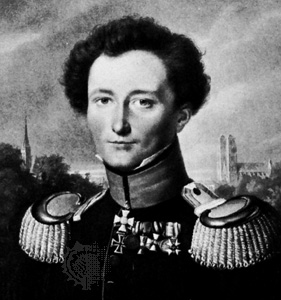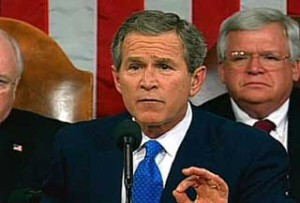Worth Reading: Countering Violent Extremism: Beyond Words, by Amy Zalman, Ph.D.
Countering Violent Extremism: Beyond Words
by Amy Zalman, Ph.D., EastWest Institute.
Words matter.
Words shape world views. Words provoke action and reaction, which in turn provoke more words. Getting the words right is critically important. Getting the action right is also critically important. And aligning the words and actions is even more important.
Much public diplomacy and other national and international discourse of the U.S. government in recent years has gotten it wrong.
 A new policy paper by a Dr. Amy Zalman, published by the EastWest Institute, highlights the mis-steps of the recent past and prescribes solutions for future public discourse.
A new policy paper by a Dr. Amy Zalman, published by the EastWest Institute, highlights the mis-steps of the recent past and prescribes solutions for future public discourse.
Dr. Zalman is a senior strategist at Science Applications International Corporation (SAIC), where she focuses on trans-culturally astute research for U.S. government clients. She also writes the “About Terrorism” reference website for New York Times online division About.com. She has a Ph.D. in Middle Eastern and Islamic studies from NYU and is highly proficient in Arabic. I met her when we were NYU faculty colleagues.
In reading Dr. Zalman’s assessment of and prescriptions for future public diplomacy I was struck by how much her underlying philosophy aligns deeply with Logos Institute’s own philosophy about communication as an instrument of strategy. And also how her assessment provides valuable insights not only on ways to counter extremism, but also on best practices in strategic communication across a range of disciplines.
Communication Isn’t About Pushing Messages at Audiences
Logos Institute has long affirmed that many leaders, much of the time, fundamentally misunderstand communication. This misunderstanding has consequences: corporations lose competitive advantage; not-for-profits find it harder to fulfill their mission; nations diminish their ability to protect citizens and achieve national security goals.
 Logos Institute holds that effective communication isn’t about pushing information to an audience. It isn’t about facts, or data. It isn’t about what sounds good in the moment. It isn’t about spin. And it certainly isn’t what makes the speaker feel good. Rather, to paraphrase the 19th-century Prussian military strategist Carl von Clausewitz,
Logos Institute holds that effective communication isn’t about pushing information to an audience. It isn’t about facts, or data. It isn’t about what sounds good in the moment. It isn’t about spin. And it certainly isn’t what makes the speaker feel good. Rather, to paraphrase the 19th-century Prussian military strategist Carl von Clausewitz,
Communication is an act of will directed toward a living entity that reacts.
Let’s parse this definition:
Communication is an act of will…
Effective communication is intentional. It is goal-oriented. It is strategic. Unlike ineffective communication, effective communication isn’t impulsive or top-of-mind. It isn’t self-indulgent. And communication isn’t just about what one says. It’s about anything one does or is observed to do. It’s about any engagement with a stakeholder, including silence, inaction, and action.
…directed toward a living entity….
Stakeholders aren’t passive vessels that simply absorb messages. Rather, they are living, breathing human beings and groups of human beings. They have their own opinions, ideas, hopes, dreams, fears, prejudices, attention spans, and appetites for listening. Most important, it is a mistake to assume that audiences think and behave just as we do. Most don’t. Understanding an audience and its preconceptions, and the barriers for that audience to accept what one is saying, is a key part of effective communication.
…that reacts.
This is the element most lost on many leaders. The only reason to engage an audience is to provoke a reaction. Effective communication provokes the desired reaction; ineffective communication doesn’t. Ineffective communication either isn’t noticed, or it confuses, or it causes a different reaction than the one desired.
And whatever the words one uses, we can count on audiences to compare the words to the speaker’s own actions. The words set expectations; the actions fulfill or betray those expectations.
So effective communication is hard. It requires understanding the desired reaction among the groups to which one communicates, which in turn requires knowing all one can about that group. And then it requires saying and doing all and only what is necessary to provoke that desired reaction. And it also requires understanding the absolutely predictable intended and unintended consequences of words, silence, inaction, and action.
U.S. Public Diplomacy
Dr. Zalman takes this approach and applies it to an impasse she says policymakers, journalists, and community leaders have reached in crafting a common understanding of ways to describe the link between religion and violent extremism.
She says that the impasse exists both factually and in terms of what might be effective in undermining the appeal of extremist movements.
She notes:
“Good communicators reveal, in speech and action, that they understand the motivations and aspirations of their audiences—and it is via this understanding that they gain their sympathies.”
Logos Institute holds that it’s impossible to move stakeholders unless you meet them where they are: physically, emotionally, intellectually, spiritually, ideologically, etc. The bigger the gulf between “us and them,” the less likely effective communication will take place.
Dr. Zalman observes that in its communication with Muslim communities around the world, the U.S. government didn’t bridge this gulf, but made it wider. She concludes:
“A review of U.S. official rhetoric shows an all too persistent absence of this understanding, an oversight which in turn can fan rather than dampen extremist sentiment.”
Understanding Our Audiences
Effective public diplomacy, according to Dr. Zalman,
“Begins with deep attention to how others think about themselves and their communities. Recent U.S. discourse is characterized by a lack of attention to precisely these issues. It has produced faulty assumptions that have alienated global audiences and clouded debate on violent extremism.”
 She gives the example of the first U.S. government public diplomacy campaign directed toward Muslims outside the U.S., the Shared Values Initiative that was launched in the Fall of 2002. It was based on an assumption, given voice by President George W. Bush, that the terrorists “hate America because of our freedoms.” An entire campaign was built around this assumption. Says Dr. Zalman:
She gives the example of the first U.S. government public diplomacy campaign directed toward Muslims outside the U.S., the Shared Values Initiative that was launched in the Fall of 2002. It was based on an assumption, given voice by President George W. Bush, that the terrorists “hate America because of our freedoms.” An entire campaign was built around this assumption. Says Dr. Zalman:
“This first official U.S. communication campaign emerged from the view that al-Qaeda hated, above all, Americans’ freedom of religious practice. The advertising campaign—designed to win hearts and minds in Muslim countries—showed American Muslims living happily in the United States. In doing so, it sought to differentiate the United States from autocratic states such as Afghanistan under the Taliban, and to reveal the virtues of a U.S. war against terrorism, and for religious freedom of practice. Most countries perceived the advertisements as propaganda and refused to air them, but even if they had, Shared Values would have been [an] irrelevant diversion. As poll after poll of Muslim populations has revealed, no mainstream populations contest either the value of civil liberties in the United States or the value of freedom of worship and they do not need convincing of their virtues.”
While it didn’t do affirmative harm, the Shared Values Initiative consumed significant resources, attention, and time.
Worse, it gave policymakers and the U.S. public the false impression that the U.S. was making inroads in perceptions among Muslim communities around the world. Greater than the financial and other cost, though, was the opportunity cost. While Shared Values was underway, we were not effectively winning hearts and minds.
And then we invaded Iraq.
It Isn’t About What We Say; It’s About What They Hear
The Shared Values Initiative was merely the first major attempt to win hearts and minds. It was not the last. Says Dr. Zalman:
“Eager to “tell our story,” regardless of whether anyone is listening, U.S. communicators have plunged into a ongoing search for the right word to describe actions, actors, groups, and belief systems. These efforts have met with failure.”
In other words, communication isn’t about telling our story. That’s self-indulgent and often illusory. It’s about getting audiences to listen – and to care.
Dr. Zalman conducts a detailed review of U.S. rhetoric and calls forth evidence of persistent failure to demonstrate understanding of the audiences to whom the U.S. was purportedly communicating.
For example, for years the U.S. government, at the highest levels, used the word “jihadist” to describe our enemies. But in March of this year the State Department advised: “In Arabic, jihad means “striving in the path of God” and is used in many contexts beyond warfare. Calling our enemies jihadis and their movement a global jihad unintentionally legitimizes their actions.”
Of course, by then the U.S. government had been using that vocabulary for 6 years.
Recommendations for Policymakers: Holistic Communication Practice
Dr. Zalman closes with a set of recommendations for U.S. policymakers. Those recommendations apply with equal force to leaders of all enterprises, corporations, not-for-profits, and governments:
“1. Actions speak as loudly as words
Speakers will be judged by their deeds and policies as well as by their rhetoric. Communications must be crafted in which actions, policies, and rhetoric are mutually reinforcing activities.
Speakers who appear to say one thing while doing another will not be viewed as credible. Speakers whose actions, policies, and words embody a coherent intention have a greater chance of being viewed as credible. Those whose communications understand both the medium and the intended recipient of the message have a greater chance of being heard and understood. And those whose communications engage their listeners as stakeholders in their shared circumstances have the best chance of being accepted.
A holistic communication strategy will be context based and will strategically, and reflectively, assess the entire environment in which communication takes place: who speaks, their medium, what they say, how they act, and who is listening.
2. Take the politics out of personal faith
When religion is addressed, policymakers, opinion leaders, and other stakeholders must speak with the awareness that no religious community is a monolith.
There are internal variations in belief and practice that extend beyond sect. The normative claims of any religion (what should be done) are not the same as what is and has been done by real people in different circumstances. [Policymakers] must be aware that religious beliefs, practices, and claims are generally not separable from other beliefs, practices, and claims. Credibility will be enhanced by addressing people and communities as complex and variegated in their motivations and actions.
3. Ideological archaeology is not the answer
Avoid engaging in debate on any particular religious claims or specific religious doctrines.
Leaders of multi-faith, pluralistic communities will be most credible by speaking and demonstrating their promotion of religion in general and removing themselves as far as possible from engaging in ecumenical discussions.
Policymakers should limit statements on any particular religion from a theological perspective. Instead, they should speak to the values of communities who value religion and address the behaviors—including speech—that democratic societies accept. And they should model these behaviors in public addresses.
4. There is no “Them” or “Us”
Use communication strategies that recognize the potential for all communities to eradicate or contain extremist tendencies.
Policymakers can have no expectation that what they say to one audience will not be heard by others. Their credibility in this environment will flow from the transparency of their statements and their ability to articulate common global principles in the context of violent extremism.
Speakers who can illustrate what we—we Americans, we who are for extremism-free communities—are for, will stand on a stronger platform than those who can only reiterate what we are against. In this vein, policymakers can state not only their commitment to liberty and pluralism but describe how communities that live these values behave; how healthy communities deal with their marginalized and disenfranchised; which behaviors moderate people everywhere, and of every faith, embrace, and which they reject.
5. Specifics speak louder than over-generalizations
Draw connections and comparisons between groups, actors, ideologies, and conflicts with care, emphasizing simple, situation- specific interpretations over claims about historical or social trends.
Just because two movements or groups or acts [e.g. an assassination in Lebanon and an assassination in Pakistan] share some characteristics does not automatically mean their comparison serves the larger communication intended.
6. Work with—not against—global media realities
Acknowledge the multiple, dynamic, and contextual meanings of terms and language related to violent extremism. Where possible, identify the variety of interpretations for events.
The Internet ensures that there are always many different interpretations of both words and events circulating at once and that no single media outlet or speaker can establish authoritative versions. Policymakers and media should avoid the insoluble question of which word is the right word by seeking to use the most appropriate terms for a particular context.”
All of this is good advice. I hope the two presidential campaigns have an opportunity to review and digest Dr. Zalman’s work.
Regardless of one’s area of responsibility — business, social service, religion, government, etc. — Dr. Zalman’s lessons have applicability beyond questions of extremism, public diplomacy, and national security.
Note to current, former, and future communication strategy students: this policy paper is now required reading.





Leave a Reply
Want to join the discussion?Feel free to contribute!